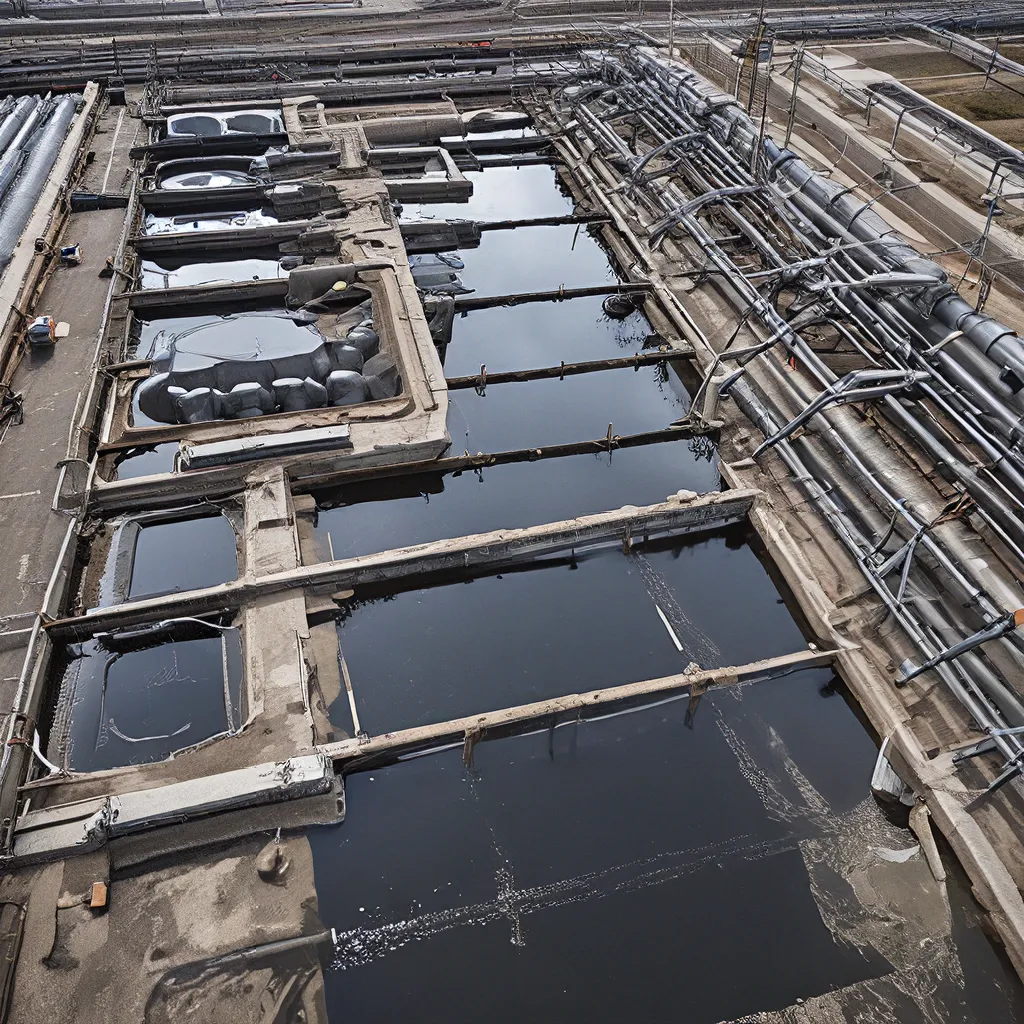
As a wastewater treatment enthusiast, I’ve been fascinated by the ever-evolving challenge of removing emerging contaminants from our water supplies. It’s a complex issue that’s got scientists, policymakers, and industry professionals all scratching their heads, trying to figure out the best way to tackle it.
But you know what they say – where there’s a will, there’s a way! And let me tell you, the folks working in this field are determined to find solutions. They’re using cutting-edge technologies, innovative approaches, and a whole lot of elbow grease to make sure our water is as clean and pure as it can be.
Defining Emerging Contaminants: The Shifting Landscape
Let’s start by getting on the same page about what we mean by “emerging contaminants.” These are essentially new or previously unrecognized substances that have been detected in water sources, and they’re starting to raise some eyebrows. We’re talking about things like pharmaceuticals, personal care products, pesticides, and industrial chemicals – compounds that, until recently, weren’t really on our radar as potential water pollutants.
Now, the reason these contaminants are so “emerging” is that our analytical capabilities have improved dramatically in recent years. We’ve developed more sensitive and precise testing methods that can detect these compounds at incredibly low concentrations. And as we’ve gotten better at spotting them, it’s become clear that they’re pretty much everywhere – in our lakes, rivers, groundwater, and even our drinking water supplies.
Understanding the Impacts: A Complex Equation
The big question, of course, is: what does this mean for us? Well, the short answer is, we’re not entirely sure. The potential health and environmental impacts of these emerging contaminants are still being studied, and the jury’s still out on just how much of a threat they pose.
Some studies have suggested that certain pharmaceuticals and personal care products could have endocrine-disrupting effects, meaning they might interfere with the normal functioning of our hormonal systems. Pesticides and industrial chemicals, on the other hand, have been linked to things like developmental toxicity and carcinogenicity. But the reality is, we don’t have a comprehensive understanding of the long-term effects of these compounds, especially when they’re present in complex mixtures.
Conventional Treatment Limitations: Sparking Innovation
Here’s where things get interesting. You see, traditional wastewater treatment processes – things like primary sedimentation, biological treatment, and disinfection – were really designed to remove the conventional pollutants we’ve been dealing with for ages, like nutrients, pathogens, and organic matter. But when it comes to these newfangled emerging contaminants, well, let’s just say they’ve got a bit of a blind spot.
That’s why we’re seeing a surge of innovation in the world of wastewater treatment technology. Scientists and engineers are pushing the boundaries, experimenting with all sorts of advanced treatment methods like ozonation, activated carbon adsorption, membrane filtration, and advanced oxidation processes. The goal is to develop more effective and targeted ways of removing these pesky emerging contaminants from our water.
Collaborative Efforts: Tackling the Challenge Together
But you know, it’s not just about the technology – it’s also about the people behind it. And I’ve got to say, the collaboration and interdisciplinary cooperation happening in this field is truly inspiring. We’ve got environmental scientists, public health experts, policymakers, and water utilities all working together to figure out the best ways to address this challenge.
For example, the United States Environmental Protection Agency (EPA) has been spearheading efforts to identify and monitor emerging contaminants, while also funding research into innovative treatment approaches. And on the industry side, companies like Alpha Wastewater are constantly pushing the envelope, developing cutting-edge technologies to keep our water clean and safe.
Embracing Uncertainty: The Path Forward
Now, I know what you’re thinking – with all this uncertainty and complexity, how the heck are we supposed to tackle this problem? Well, the way I see it, the key is to embrace the unknown and stay flexible.
As one expert put it, “We’re dealing with a constantly evolving landscape, and we need to be prepared to adapt our strategies as new information and technologies emerge.” That means staying on top of the latest research, encouraging open dialogue, and being willing to try new approaches, even if they might not work out perfectly the first time.
And you know what? I actually find that kind of exciting. It’s like we’re on the frontier of water treatment, and every day brings new challenges and opportunities. So let’s roll up our sleeves, dive in, and see what we can discover – because who knows, the next big breakthrough might just be right around the corner.